I’m not one to hype up products without good reason, but Silagen Scar Gel has earned its place on my bathroom shelf.
If you’re dealing with scars—new, old, surgical, or accidental—this gel could be the game-changer you’ve been searching for.
It’s not just another skincare gimmick; it’s a medical-grade silicone gel trusted by doctors and backed by real results. I’ve seen it work wonders on my own skin, and I’m excited to share why you should give it a try.
Let’s get into my experience and break down everything you need to know.
My Journey With Silagen Scar Gel
Scars have always been a part of my story. From a clumsy childhood tumble that left a jagged mark on my knee to a recent surgery that gifted me a bright red line across my abdomen, I’ve got a collection that tells tales of resilience—and frustration. I scar easily, and those marks don’t fade without a fight.
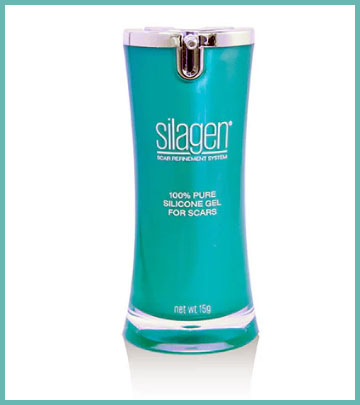
So, when my plastic surgeon handed me a sample of Silagen Scar Gel post-mastopexy, I was skeptical but hopeful. I’d tried other products before—creams, oils, even those sticky silicone sheets that never stayed put. Nothing had truly impressed me.
I started using Silagen’s 100% Pure Silicone Gel, applying it twice daily as instructed. The first thing I noticed was how effortless it was to use. The gel glides on smoothly, dries in a minute or two, and doesn’t leave a sticky residue. It’s like applying a lightweight serum, not some heavy, greasy ointment. Within a week, I saw my surgical scar—a raised, angry red line—start to calm down.
The redness softened, and the itchiness that had been driving me nuts faded away. By week three, I was floored. My scar looked like it was months into healing, not weeks. It was flatter, smoother, and blending into my skin tone.
What made the experience even better was how Silagen fit into my life. I could slap it on in the morning, let it dry, and go about my day—makeup, sunscreen, or even tight workout clothes didn’t budge it. At night, I’d massage it into the scar before bed, and it became a soothing ritual.
I’m not saying it erased my scar completely (let’s be real, no product can do that), but it transformed something I was self-conscious about into a mark I could live with confidently. I even started using it on an old scar from my teen years, and while the results were slower, I noticed it softening over time. Silagen gave me control over my scars, and that’s a feeling worth sharing.
Pros Of Silagen Scar Gel
- Fast-Acting Results: One of the biggest wins with Silagen is how quickly it works. I saw changes in my surgical scar within a week—less redness, less itching, and a smoother texture. By three weeks, my scar looked months ahead in healing. Studies, like one from the Journal of Clinical and Aesthetic Dermatology in 2016, back this up, showing significant improvements in scar appearance after just 12 weeks of twice-daily use. If you’re impatient like me, Silagen’s speed is a huge plus. It’s not instant, but it’s faster than anything else I’ve tried.
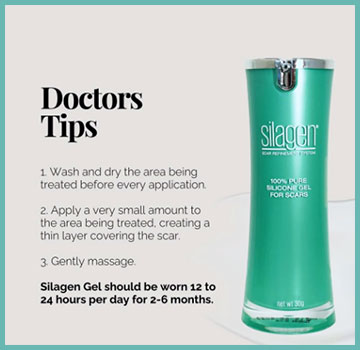
- Easy Application: Applying Silagen is a breeze. The gel comes in an airless pump that dispenses just the right amount—no mess, no waste. You apply a thin layer, massage it in, and it dries in under two minutes. I can layer makeup or sunscreen over it without worrying about it sliding off. Unlike silicone sheets, which I found bulky and hard to keep in place, Silagen fits seamlessly into my routine. It’s perfect for scars on tricky spots like joints or your face, where flexibility matters.
- Comfort and Symptom Relief: Scars can be uncomfortable—itchy, tight, or even painful. Silagen tackles those issues head-on. The silicone barrier soothes irritation and keeps the scar hydrated, which made a noticeable difference in how my skin felt. I stopped scratching at my surgical scar after a few days of use, and the tightness eased up. For anyone dealing with post-op discomfort, this is a lifesaver. It’s gentle, too—no burning or stinging, even on my sensitive skin.
- Sun Protection Option: The Silagen Gel + SPF 30 is a standout for daytime use. New scars are prone to hyperpigmentation, and UV rays can make them darker and more prominent. The zinc oxide in this formula provides broad-spectrum protection without harsh chemical sunscreens like oxybenzone. I used it on a scar on my arm, and it kept the mark from turning a stubborn brown. It’s a two-in-one product that simplifies your routine while protecting your skin.
- Versatility for All Scars: Whether you’re dealing with surgical scars, burns, keloids, or even old marks, Silagen is versatile. I’ve used it on fresh post-op scars and a decade-old injury with results on both. It’s safe for kids and all skin types, which is great if you’re sharing it with family. The gel’s flexibility makes it ideal for scars on your face, hands, or knees—anywhere you need it to move with you.
Also Read: My Thoughts On Magnilife Leg And Back Pain Relief
Cons Of Silagen Scar Gel
- High Price Point: Let’s talk about the elephant in the room: Silagen isn’t cheap. At around $92 per ounce, it’s one of the pricier silicone gels out there. I felt the sting when I had to buy a full bottle after my sample ran out. For someone on a tight budget, this can feel like a splurge, especially since you need to use it consistently for 8-12 weeks to see optimal results. While I think it’s worth it for the quality, it’s a hurdle for some.
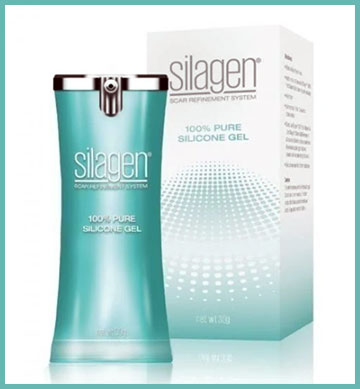
- Limited Availability: Silagen is only sold through authorized physicians, like dermatologists or plastic surgeons. This ensures you’re getting the real deal, but it can be a hassle if you don’t have a doctor nearby or prefer shopping online. I had to order mine through a clinic’s website, and the shipping took a week. Some folks on Reddit have reported sketchy experiences buying from unauthorized resellers like Walmart or Amazon, where they got empty bottles or questionable products. Stick to legit sources, but know it’s not as convenient as grabbing something off a store shelf.
- Not a Miracle for Old Scars: While Silagen works wonders on new scars, it’s less effective on older ones. I tried it on a scar from my teens, and while it softened the texture a bit, the fading was minimal. Doctors say silicone gels are best for scars less than two years old, and my experience confirms that. If you’re hoping to erase decade-old marks, you might need to pair Silagen with treatments like laser resurfacing for better results. It’s not a dealbreaker, but it’s worth knowing.
- Requires Consistency: Silagen isn’t a one-and-done solution. You have to apply it twice a day, every day, for at least two months to see the best results. If you’re forgetful or don’t have time for a strict routine, this can be a challenge. I missed a few applications early on and noticed slower progress. It’s not high-maintenance, but it does demand commitment. For those prone to keloids, treatment could stretch to six months, which feels daunting.
Comparison With Other Scar Treatment Brands
- Mederma Advanced Scar Gel: Mederma is the name you probably know from drugstore shelves. It’s marketed as a scar-fading hero, but its key ingredient—onion bulb extract—doesn’t have the same scientific backing as silicone. I tried Mederma years ago on a burn scar, and while it kept the skin soft, it didn’t do much for redness or texture. The 2014 International Clinical Recommendations on Scar Management found conflicting evidence on onion extract’s effectiveness, which aligns with my lukewarm results. Mederma is cheaper and easier to find, but it’s better for minor cuts or bruises than serious surgical scars. Silagen’s medical-grade silicone outshines it for hypertrophic or keloid scars.
- NewGel+ Advanced Silicone Gel: NewGel+ is a close cousin to Silagen, made by the same company, NewMedical Technology. It’s also a silicone-based gel but includes vitamin E for extra moisturizing. I used NewGel+ on a small scar from a kitchen mishap, and it worked well—smooth texture, fast drying, and decent fading after a month. At about $54 per ounce, it’s more affordable than Silagen, but it lacks the SPF option and physician-exclusive quality control. Both are effective, but I trust Silagen more for post-op care due to its professional endorsements and cleaner formula.
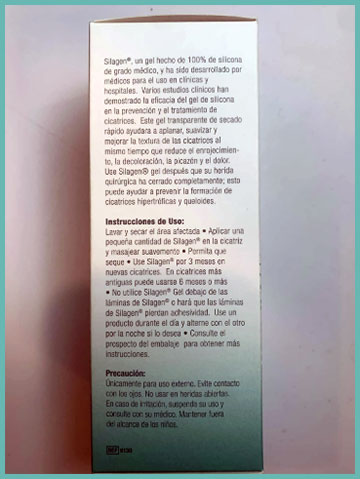
- BioCorneum Advanced Scar Treatment: BioCorneum is another silicone gel with SPF, making it a direct competitor to Silagen’s SPF 30 version. I haven’t used it personally, but a friend swore by it after her C-section. It’s priced around $32 per ounce, which is a steal compared to Silagen. However, BioCorneum uses chemical sunscreens, which can irritate sensitive skin, unlike Silagen’s mineral-based zinc oxide. Reviews suggest BioCorneum dries a bit slower, which could be annoying if you’re in a rush. Silagen edges out for its silky feel and doctor-driven reputation, but BioCorneum is a solid budget-friendly alternative.
- ScarAway Silicone Gel: ScarAway is widely available and offers both gel and silicone sheets. I tried their gel on a scraped elbow, and it was okay—less greasy than Mederma but not as luxurious as Silagen. ScarAway’s silicone is effective, but the formula feels thinner, and I needed more product per application. It’s cheaper at around $30 per ounce, but you might go through it faster. ScarAway’s sheets are a plus for larger scars, but they’re less practical for mobile areas. Silagen’s ease of use and faster results make it my pick, though ScarAway is decent for casual use.
Tips For Using Silagen Scar Gel
- Apply on Clean, Dry Skin: Your scar needs to be clean and dry before you apply Silagen. I learned this the hard way when I tried using it right after a shower, and the gel just slid off. Wash the area with a gentle cleanser, pat it dry, and make sure there’s no lotion or oil residue. This helps the gel adhere properly and form that protective silicone barrier. If you’re using the SPF version, apply it as your first layer in the morning, before other skincare products.
- Massage Gently for Better Absorption: Massaging Silagen into your scar isn’t just about application—it’s a key part of the process. I spend about 30 seconds gently rubbing the gel in circular motions. This helps break down scar tissue and boosts blood flow, which aids healing. One user I read about said massaging was the secret to their amazing results, and I agree. Don’t go too hard, though; you don’t want to irritate the skin. Just be consistent, and you’ll notice the scar softening over time.
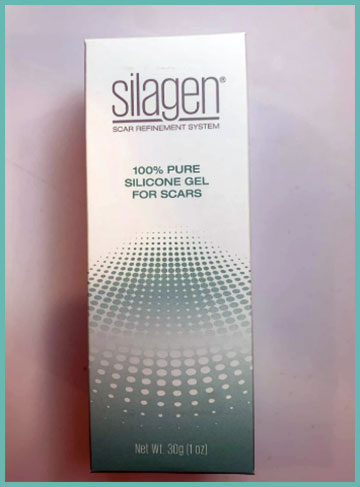
- Stick to a Twice-Daily Routine: Consistency is everything with Silagen. I set reminders on my phone to apply it morning and night, and it’s become as automatic as brushing my teeth. Apply a thin layer—less is more—and let it dry completely before covering it with clothes or makeup. If you’re prone to raised scars like keloids, you might need to keep this up for six months. Missing applications can slow your progress, so make it a habit. I keep the bottle on my nightstand as a visual cue.
- Protect Your Scar from the Sun: Sun exposure is a scar’s worst enemy. I made the mistake of skipping sunscreen on a scar once, and it turned a stubborn dark brown. If you’re using Silagen’s Pure Gel, layer a broad-spectrum sunscreen over it during the day. The SPF 30 version is a lifesaver for this, especially if you’re outside a lot. I also wear loose clothing over scars on my body to shield them from UV rays. Keeping your scar protected speeds up healing and prevents discoloration.
- Store and Handle Properly: Silagen’s airless pump is great, but it can be tricky to prime at first. I had to tap the bottle upside down and pump it a few times to get it going. Store it in a cool, dry place—my bathroom cabinet works fine. If you’re using the gel with silicone sheets (though you shouldn’t combine them), keep the sheets clean with Silagen’s foaming cleanser to maintain their stickiness. Proper storage ensures you get every drop of that pricey gel.
Read More: My Thoughts On Manuka Honey Wound Gel
Frequently Asked Questions (FAQ)
Yes, Silagen works, and I’m living proof. My surgical scar faded significantly in just three weeks, looking months ahead in healing. Clinical studies, like one from 2016, show silicone gels like Silagen reduce scar height, redness, and texture after 12 weeks of use. It’s most effective on new scars—think surgical, burn, or hypertrophic—but can soften older ones too. Results depend on consistent use and proper application. If you follow the twice-daily routine and massage it in, you’re likely to see smoother, less noticeable scars.
Silicone gels like Silagen aren’t perfect. They’re pricey—Silagen costs about $92 per ounce, which can strain your wallet. They require diligent twice-daily application for months, which isn’t ideal if you’re forgetful. Older scars (over two years) often see minimal improvement, so don’t expect miracles there. Some users report mild irritation, especially with sensitive skin, though I didn’t experience this. Availability is another issue; you can only buy Silagen through doctors, and unauthorized resellers might sell fakes. Lastly, it won’t help pitted acne scars—stick to silicone for raised or red marks.
Plastic surgeons often recommend silicone-based gels, and Silagen is a top choice. Doctors like Silvia Kurtovic and William Adams use it in their practices, praising its effectiveness for post-op scars. Studies, including the 2014 International Clinical Recommendations on Scar Management, back silicone as the gold standard for hypertrophic and keloid scars. Other gels like NewGel+ and BioCorneum also get nods, but Silagen’s physician-exclusive status and SPF option make it a favorite. My surgeon gave me Silagen, and I trust their expertise—it delivered.
Yes, you can apply moisturizer over Silagen, but wait until the gel dries completely—about one to two minutes. I apply Silagen first, let it set, then layer my moisturizer or sunscreen on top. This ensures the silicone barrier forms properly without interference. Don’t apply moisturizer before Silagen, as it can prevent the gel from adhering. If you’re using the SPF 30 version, you might not need extra sunscreen, but a lightweight moisturizer won’t hurt. Just keep the scar area clean and dry before starting.
Final Thoughts
Scars don’t have to define you, and Silagen Scar Gel proves it. From its fast-acting formula to its easy application, it’s transformed how I feel about my skin. Whether you’re fresh out of surgery or tackling a stubborn old mark, this gel delivers results that make you feel confident. It’s not perfect—price and availability are hurdles—but the smoother, less noticeable scars are worth it. Grab Silagen from your doctor’s office, commit to the routine, and watch your skin thank you. You deserve to feel great in your own skin.
